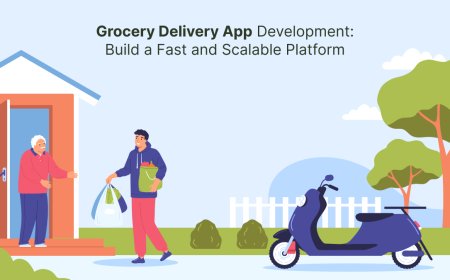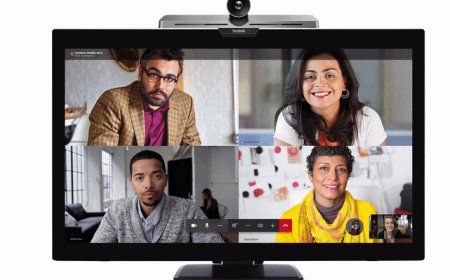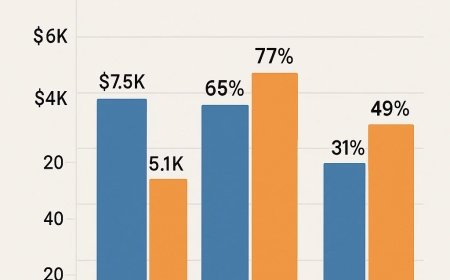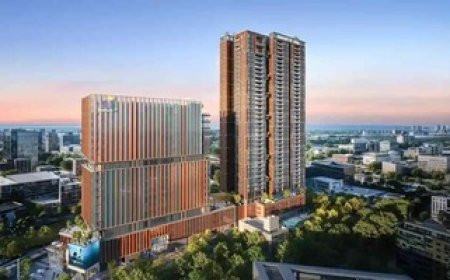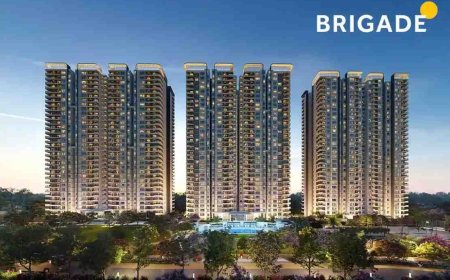Step Into a New Era of Retail and Entertainment at Gulshan One29
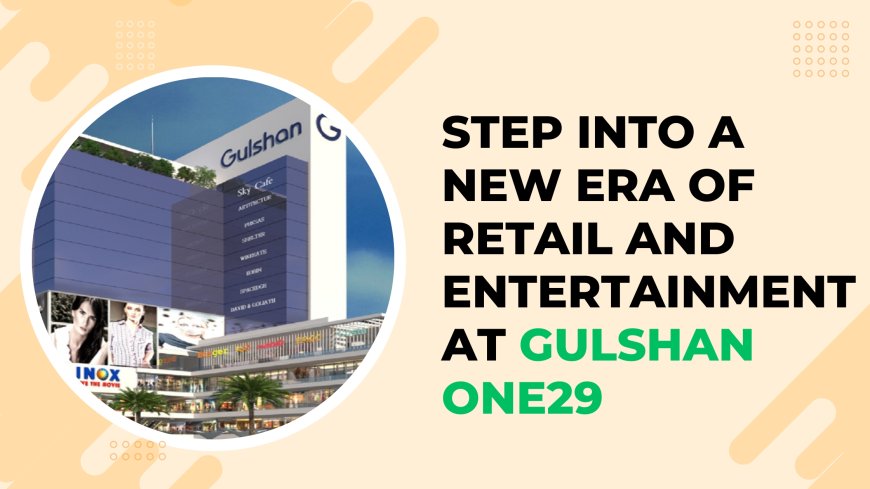
As the commercial landscape of urban India evolves, so does the concept of retail and entertainment. Shopping is no longer a mere transactionits an experience. Leisure is no longer confined to a weekend planits integrated into everyday life. The expectations of consumers have grown with their lifestyles. In this changing environment, real estate developments are moving beyond traditional structures to deliver dynamic, multifunctional spaces.
Located in Noida, Gulshan One29 captures the essence of this evolution. With its hybrid design approach, community-centric vision, and future-ready infrastructure, the project signals a new direction for how retail and entertainment coexist. It is not just a marketplace or a destinationit is a modern environment crafted to serve varied purposes, from everyday conveniences to leisure indulgence.
This article explores how projects like Gulshan One29 mark a new chapter in retail and entertainment, focusing on function, design, sustainability, and urban relevance.
Rethinking Retail Spaces
Retail design has undergone a major shift in recent years. Traditional mall formats have started giving way to more organic, pedestrian-friendly developments that encourage fluid interaction between customers and brands.
Key trends reshaping retail spaces:
-
Open-concept high streets replacing closed malls
-
Flexible unit sizes for pop-ups and flagship stores
-
Brand storytelling through immersive storefronts
-
Walkable layouts with resting and meeting zones
-
Emphasis on local and experiential retail
This project reflects these trends by offering not just shops but vibrant, accessible environments that foster browsing, discovery, and social interaction.
A Dynamic Mix of Retail and Leisure
Successful retail hubs today are defined by how well they blend commerce with experience. A space that offers both shopping and leisure becomes a lifestyle zonedrawing diverse crowds, increasing dwell time, and supporting a broader range of businesses.
What makes this mix essential:
-
Shoppers stay longer when there are entertainment options
-
Dining and cafs create natural social gathering spots
-
Cinemas and gaming centers attract family and youth traffic
-
Seasonal events and performances make spaces feel active
-
People value multifunctional destinations over single-purpose trips
By balancing commercial needs with leisure activities, developments like Gulshan One29 support a more sustainable visitor economy throughout the week.
Location: The Urban Advantage
A developments success depends heavily on its ability to integrate into the surrounding urban fabric. This project is positioned in a part of Noida that is rapidly urbanizingserving as a link between residential growth and increasing corporate activity.
Urban location benefits:
-
Easy access from key arterial roads and metro lines
-
Close proximity to residential neighborhoods and office parks
-
Walking distance from institutions, clinics, and daily services
-
Connectivity with upcoming infrastructure corridors
-
High visibility from major intersections and thoroughfares
This strategic placement ensures high footfall and relevance to a broad user baseretailers, employees, students, and families alike.
Future-Ready Architecture and Planning
Todays real estate developments are expected to perform over decades, not just years. That means planning for flexibility, technology, and environmental resilience from the start.
Elements of future-ready design:
-
Modular floor plans that can adapt to new business formats
-
Durable materials with low lifecycle costs
-
Digitally enabled infrastructure for smart utilities
-
Ventilated open-air zones that support pandemic-era spacing
-
Mixed-use design that allows for business and leisure synergy
Such planning allows commercial environments to evolve with social and economic shifts rather than being outdated within a decade.
Prioritizing Visitor Experience
Visitor satisfaction is central to commercial viability. Its not just about the number of people visitingit's about how they move, feel, and return.
Features that support better visitor experience:
-
Intuitive navigation across retail and leisure zones
-
Well-distributed seating areas for resting and socializing
-
Shade, trees, and green buffers that enhance comfort
-
Clean, well-maintained facilities such as washrooms and elevators
-
Safety systems including CCTV, lighting, and emergency services
A well-designed experience increases the time visitors spend within the complex, supporting all categories of businesses in the process.
Retail Formats for a Changing Economy
The post-pandemic retail market has shown a shift toward smaller, smarter, and more service-driven formats. Businesses no longer depend solely on footfallthey also look for efficiency, brand placement, and flexibility.
What modern retail tenants seek:
-
Storefront visibility for walk-in conversions
-
Easy access for delivery and logistics
-
Spaces that accommodate both physical and digital services
-
Lower maintenance and utility costs
-
Layouts that support seasonal reconfigurations
This development offers these operational advantages, ensuring long-term viability for a wide range of business typesfrom established brands to emerging local enterprises.
Community as a Core Concept
Retail destinations are no longer isolated from their surroundingsthey are expected to contribute to neighborhood life. This means offering spaces that the community can use, enjoy, and return to frequently.
Community-focused features:
-
Outdoor areas for local events and seasonal markets
-
Kid-friendly spaces and activity corners
-
Pet-friendly zones and walking areas
-
Wellness hubs like clinics, gyms, and spas
-
Seating nooks and art installations that reflect local culture
These features make a commercial space feel familiar and comfortable, rather than transactionalenhancing loyalty and everyday use.
The Rise of Urban Entertainment
Entertainment is now an integral part of everyday city life. From movie screenings and casual dining to immersive gaming and rooftop lounges, people are drawn to places where entertainment feels natural, not staged.
Characteristics of urban entertainment spaces:
-
Accessible across age groups and time zones
-
Integrated with dining and shopping
-
Flexible venues for performances or screenings
-
Designed for both spontaneous and planned visits
-
Enhance weekend, evening, and off-peak appeal
At Gulshan One29, entertainment functions are zoned alongside retail and F&B areas, creating an environment thats vibrant and multifunctional.
Environmental Responsibility in Construction
Sustainability is not just a buzzwordit is an operational principle. Responsible design leads to healthier spaces, lower resource use, and stronger public image.
Environmentally responsible choices include:
-
Rainwater harvesting systems and permeable surfaces
-
Solar panels or renewable energy for common areas
-
Use of native plants to reduce irrigation needs
-
Natural lighting and ventilation wherever possible
-
Efficient waste collection and recycling systems
These design decisions help not just the planet, but also the businesses and visitors who depend on lower running costs and healthier environments.
Economic and Investment Impact
From a real estate investment point of view, integrated commercial spaces like Gulshan One29 offer diversified revenue streams and long-term relevance. They are designed to attract both retail leases and capital investment.
Economic advantages for investors:
-
Mixed-use profiles ensure revenue stability
-
Premium visibility enhances rental value
-
Smaller unit sizes increase accessibility for varied tenants
-
Strong demand from retail, service, and entertainment sectors
-
Urban integration supports capital appreciation
Commercial investors, especially those seeking long-term portfolio growth, find such developments more resilient to market fluctuations.
Embracing Flexibility and Scalability
One of the greatest strengths of a modern commercial complex is its ability to change. Whether its a shift in tenant needs, a change in technology, or an evolving audiencespaces must remain agile.
How flexibility is designed into the project:
-
Units that can be combined or divided without structural changes
-
Zones that can be converted from retail to F&B or service use
-
Infrastructure for quick digital upgrades and tech installations
-
Wide corridors that can accommodate pop-ups or seasonal booths
-
Event-ready spaces that serve dual purposes
Scalability allows the space to grow alongside the city, making it relevant for decades to come.
Conclusion
The retail and entertainment experience is being redefined in Indias emerging urban centers. Its no longer about shopping alone or a meal outits about a destination that combines discovery, leisure, culture, and utility in one integrated space.
Gulshan One29 Retail Shops reflects this transformation with its people-centric design, future-ready infrastructure, and commitment to community integration. As cities like Noida become denser and more diverse, such developments set the standard for how commercial real estate can contribute not just to business, but to urban life as a whole.








&srotate=0)






